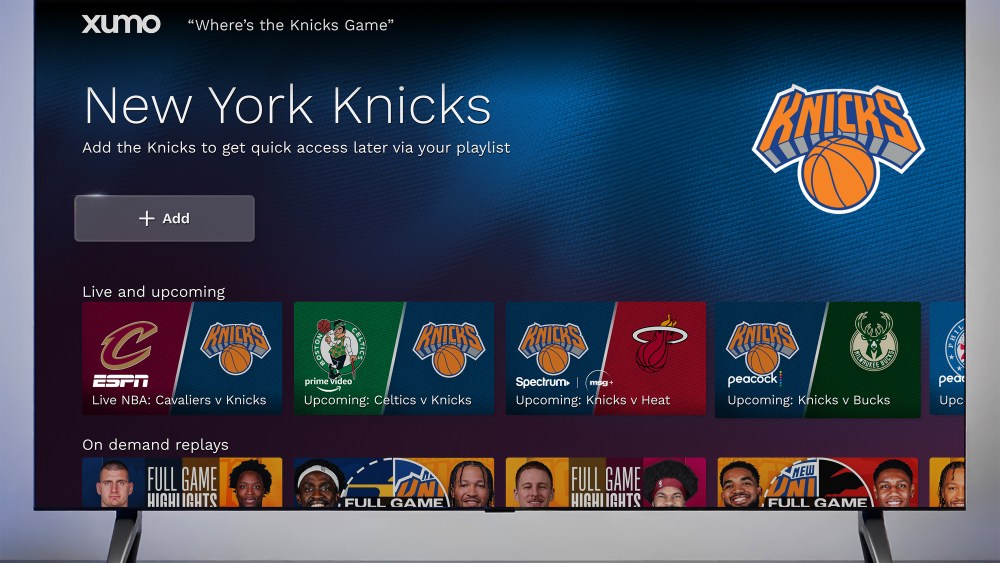Charter Communications has launched its first App Store as part of a larger push to promote broadband and video services that provide easy access to a variety of streaming platforms, not just cable channels.
With its “Seamless Entertainment” campaign, starring Tracy Morgan in a series of saucy spots, Charter aims to position itself as a portal to subscribers to Netflix, HBO Max, Disney+, Paramount+ and more, much like Amazon Prime Video and Roku do for their subscribers.
Charter held an event in Manhattan on Oct. 9 as part of Advertising Week to show off new features and its marketing position to customers. The goal is to convince consumers that Charter is one-stop shopping for the powerful broadband service they need to watch all their bandwidth-hungry streamers. It also aims to explain the complex concept that charter customers who currently subscribe to traditional TV packages can also access major streaming apps via authentication. This includes Disney’s ESPN app, which launched in August.
The ESPN streamer serves a huge amount of games and programming that doesn’t run on linear ESPN. However, those who paid for linear ESPN through a traditional charter cable package can access the streaming app at no additional cost. The problem with Charter and ESPN is that most traditional cable consumers don’t realize this.
The landscape of buying and selling TV packages has changed immeasurably over the past 15 years, ever since Netflix beefed up its streaming menu with acquired original series. Charter’s push is part of the industry’s gradual shift back to bundled packages of entertainment from multiple programming sources. Cable operators like Charter and its biggest rival, Comcast, are working to right past customer service mistakes in order to promote themselves as the best-value option for consumers.
Chris Winfrey, Charter’s president and CEO, sees the App Store as a funnel to draw consumers into Charter’s broader video and broadband packages once they realize the cost of paying a la carte for streaming apps. In many ways, the pay-TV business is moving back toward bundling.
“We have a much bigger distribution platform than our video subscribers because the broadband connectivity service that we provide gives us several things. One is that we can think about the video business a little bit differently. We have 30 million broadband customers, the vast majority of whom no longer have video, so it gives us the opportunity to sell AMC+, ESPN, Paramount+, and HBO to a broader broadband customer base.” Winfrey said. “Whatever the customer wants, we can offer it in the video app store. Perhaps ideally, at some point the customer will say, look, that’s a lot of money. If you have $100, you can include video as part of that.”
During a Q&A with CNBC reporter Alex Sherman at the Spectrum event, Winfrey was asked about miscalculations over the past decade and a half that have led to U.S. cable businesses losing about 35% of their customers. Winfrey, who worked at Charter for 15 years and was promoted to CEO in December 2022, pointed to a major shift in Hollywood’s content licensing strategy as streaming platforms spend more money on acquired and original series. It happened gradually, but in the long run it hurt both programmers and distributors.

CNBC’s Alex Sherman, Charter’s Chris Winfrey, AMC Networks’ Christine Dolan, and ESPN’s Jimmy Pitaro.
“The idea of selling content that is not protected from an authentication standpoint, without advertising, without branding, and growing subscribers was huge.
“That was a mistake. And once that happened and you started introducing entities that were selling content at a discount for a long period of time and potentially losing money for a long period of time, it wasn’t a problem anymore,” Winfrey said. Winfrey pointed out that Disney and others “naturally pursued direct-to-consumer and started bringing back content.” And the fact that Netflix was Wall Street’s darling fueled a consumer boom that also tipped Hollywood over.
Winfrey acknowledged that cable still has an image problem, but acknowledged that it is now getting more heat from investors because its broadband service remains fundamental to residential and business customers. Essentially, Hollywood has learned the benefits of distribution partnerships, rather than relying solely on its direct-to-consumer division, which has spent huge start-up costs.
“And it looks like we’re in a pretty good place now, because we can put it back together in a way that we think is good for the consumer, and actually does the best it can for the programmer’s profitability, and gets some valuable utility out of it,” Winfrey said.
Charter’s presentation also highlighted enhancements to its voice remote control service that Charter has developed in collaboration with Comcast. Charter and Comcast are also partners on the Xumo Stream Box platform, which is designed to help consumers easily transition between linear and streaming platforms.
In addition to Winfrey, the event was attended by ESPN chief Jimmy Pitaro and AMC Networks CEO Christine Dolan. AMC and ESPN have been working closely with Charter in recent months to create vehicle deals that incorporate apps such as Disney+, Hulu, ESPN, and AMC+ premium drama services. Programmers need to incorporate streaming apps to bring value to cable distribution partners. Long gone are the days when each new cable transportation contract automatically secured a significant rate increase.
Winfrey, Dolan and Pitaro’s conversation highlighted how the pay TV market is becoming more layered with the introduction of more options, such as the rise of free streaming channels and apps. Whether small (AMC) or large (Disney), programmers need support from MVPD. This is because the ability to bundle disparate services and content from multiple providers allows for more attractive consumer products.
“We have two different types of customers: streaming-only customers and broadband-only customers. Customers who use streaming products are one type of customer, and the other type of customer is those who watch traditional linear the longest.
part. “The Venn diagram is not as big as you think,” Dolan said.
Pitarou praised the commitment to “seamless entertainment” as the right approach at a time of restructuring the television ecosystem. The end result of tough negotiations that included shutting off Charter’s Disney Channel for nearly two weeks in 2023 is a closer collaboration between the two companies.
Even when ESPN first became independent, “we also decided internally that we wanted to continue our commitment to the pay TV environment, and the best way to demonstrate that commitment is by adding value post-launch,” Pitaro said. “We’ve made all of the product enhancements within the ESPN app available to Charter subscribers. Once you launch the ESPN app and authenticate, you’ll have access to all the interactive features that are currently within the app, including deeper personalization, Fed Fantasy, stats integration, commerce integration, and more that are available to Charter subscribers. This is our way of adding even more value to that environment.”
This is one of Tracy Morgan’s spots aimed at getting Spectrum’s pitch to consumers.

